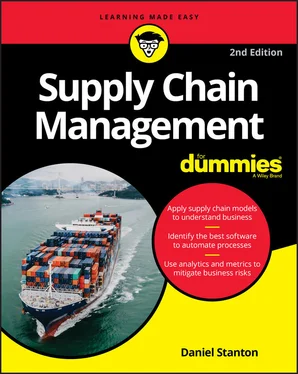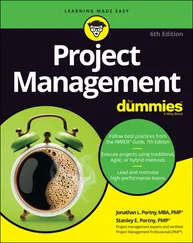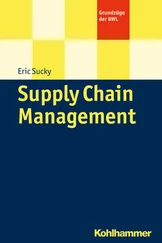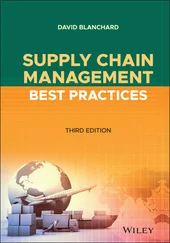8 Part 4: Driving Value with Supply Chain Management Chapter 15: Transforming Your Supply Chain Improving Transparency and Visibility Deploying Demand Shaping Performing Postponement Renewing Regional Sourcing Reducing Stock-Keeping Units Optimizing Inventory Incorporating Vendor-Managed Inventory Adjusting Payment Terms Using Supply Chain Finance Controlling the Bullwhip Effect Starting with Small Improvements Creating Sandboxes Investing in Innovation Chapter 16: Adopting Supply Chain Metrics Understanding Metrics Identifying Performance Attributes Understanding SCOR Metrics Optimizing Operational Metrics Formalizing Financial Metrics Perfecting People Metrics Solidifying Sustainability Metrics Chapter 17: Managing Supply Chain Risks Challenging Assumptions about the Future Building Supply Chain Resilience Identifying Risks Classifying Risks Scoring Risks Managing Risks Handling a Crisis Chapter 18: Building Supply Chain Analytics The Rise of Big Data, Sensors, and the Internet of Things Outline of an Analytics Plan Correlation, Causation, and Interpolation Modeling, Simulation, and Optimization Scenario Planning Scorecards, Dashboards, and Control Towers
9 Part 5: Building Your Supply Chain Management Career Chapter 19: Selecting a Supply Chain Career Doing Your Homework Examining Supply Chain Career Categories Chapter 20: Pursuing Supply Chain Education Earning Certificates and Certifications Earning Degrees and Diplomas Exploring Online Education Options Playing Supply Chain Games Following Supply Chain Media
10 Part 6: The Part of Tens Chapter 21: Ten Questions to Ask about Your Supply Chain Who Are Your Key Customers? What Do Your Key Customers Value? How Could Your Supply Chain Create More Value? How Do You Define Supply Chain Management? What Information Do You Share with Suppliers? How Do You Compare with Competitors? What Changes Could Increase Revenue? What Changes Could Lower Costs? What Affects Your Supply Chain Now? What Will Affect Your Supply Chain in the Future?
11 Index
12 About the Author
13 Advertisement Page
14 Connect with Dummies
15 End User License Agreement
1 Chapter 2 TABLE 2-1 Quantitative versus Qualitative Metrics
2 Chapter 3 TABLE 3-1 Supply Chain Priorities TABLE 3-2 Common Supply Chain Management Trade-Offs and Solutions
3 Chapter 4 TABLE 4-1 Three Approaches to Process Improvement
4 Chapter 5 TABLE 5-1 Example Top-Level SCOR Processes
5 Chapter 17TABLE 17-1 Risk RegisterTABLE 17-2 Risk Register with Actions
6 Chapter 19TABLE 19-1 O*NET Codes for Supply Chain Associate PositionsTABLE 19-2 O*NET Codes for Supply Chain Technician PositionsTABLE 19-3 O*NET Codes for Supply Chain Planner and Analyst PositionsTABLE 19-4 O*NET Codes for Supply Chain Engineer PositionsTABLE 19-5 O*NET Codes for Supply Chain Supervisor PositionsTABLE 19-6 O*NET Codes for Supply Chain Manager PositionsTABLE 19-7 O*NET Codes for Supply Chain IT Manager PositionsTABLE 19-8 O*NET Codes for Supply Chain Educator Positions
1 Chapter 1FIGURE 1-1: Frequency of supply chain in book titles.FIGURE 1-2: Scenario-planning model.FIGURE 1-3: Supply chain management principles.FIGURE 1-4: The New Supply Chain Agenda.
2 Chapter 2FIGURE 2-1: Three supply chain flows.FIGURE 2-2: Logistics, purchasing, and operations are interdependent.FIGURE 2-3: Dominant group personalities.FIGURE 2-4: Example of a causal loop diagram.
3 Chapter 3FIGURE 3-1: Example HOQ.FIGURE 3-2: Supply chain cost drivers.FIGURE 3-3: Biased forecast.FIGURE 3-4: Average inventory level.
4 Chapter 4FIGURE 4-1: Nodes and links in a supply chain.FIGURE 4-2: Example VSM.FIGURE 4-3: Sample work breakdown structure.FIGURE 4-4: Sample network diagram.FIGURE 4-5: Sample RACI matrix.FIGURE 4-6: Sample project scorecard.FIGURE 4-7: The six responsibilities of a leader in the DIRECT model.
5 Chapter 5FIGURE 5-1: The six top-level supply chain processes in the SCOR Model.FIGURE 5-2: Supply chain objectives.
6 Chapter 6FIGURE 6-1: Supply chain planning model.
7 Chapter 7FIGURE 7-1: Tiers in a supply chain.FIGURE 7-2: Tiers of direct and indirect suppliers.FIGURE 7-3: SIPOC diagram.FIGURE 7-4: Segmentation of inputs to a process.FIGURE 7-5: Cash conversion cycles.FIGURE 7-6: A risk register.
8 Chapter 8FIGURE 8-1: Production scheduling process flow.FIGURE 8-2: Manufacturing capacity and output.FIGURE 8-3: Assembly line versus cellular manufacturing.FIGURE 8-4: Make-to-stock, make-to-order, and engineer-to-order production.
9 Chapter 9FIGURE 9-1: A boxcar.FIGURE 9-2: Air cargo.FIGURE 9-3: Inventory chart.FIGURE 9-4: Storage racks and mezzanine.FIGURE 9-5: Sample sales order.
10 Chapter 11FIGURE 11-1: The information value chain.
11 Chapter 12FIGURE 12-1: An example capability maturity model.FIGURE 12-2: Basic ERP system modules.
12 Chapter 13FIGURE 13-1: FDM 3D printer.
13 Chapter 15FIGURE 15-1: Relationship between service level and inventory.
14 Chapter 17FIGURE 17-1: Supply chain risk heat map.
15 Chapter 18FIGURE 18-1: Linear interpolation of data points.FIGURE 18-2: Variables that have a positive correlation.FIGURE 18-3: Variables that have a negative correlation.FIGURE 18-4: Variables that are random and not correlated.FIGURE 18-5: Sample supply chain dashboard.
16 Chapter 19FIGURE 19-1: Career alignment diagram.FIGURE 19-2: Sample career information from O*NET.FIGURE 19-3: Supply chain careers framework.
1 Cover
2 Title Page
3 Copyright
4 Table of Contents
5 Begin Reading
6 Index
7 About the Author
1 iii
2 iv
3 1
4 2
5 3
6 5
7 6
8 7
9 8
10 9
11 10
12 11
13 12
14 13
15 14
16 15
17 16
18 17
19 18
20 19
21 20
22 21
23 22
24 23
25 24
26 25
27 26
28 27
29 28
30 29
31 30
32 31
33 32
34 33
35 34
36 35
37 36
38 37
39 38
40 39
41 40
42 41
43 42
44 43
45 44
46 45
47 47
48 48
49 49
50 50
51 51
52 52
53 53
54 54
55 55
56 56
57 57
58 58
59 59
60 60
61 61
62 62
63 63
64 65
65 66
66 67
67 68
68 69
69 70
70 71
71 72
72 73
73 74
74 75
75 76
76 77
77 78
78 79
79 80
80 81
81 82
82 83
83 84
84 85
85 86
86 87
87 88
88 89
89 90
90 91
91 92
92 93
93 94
94 95
95 96
96 97
97 98
98 99
99 100
100 101
101 102
102 103
103 104
104 105
105 107
106 108
107 109
108 110
109 111
110 112
111 113
112 114
113 115
114 116
115 117
116 118
117 119
118 120
119 121
120 122
121 123
122 124
123 125
124 127
125 128
126 129
127 130
128 131
129 132
130 133
131 134
132 135
133 136
134 137
135 138
136 139
137 140
138 141
139 142
140 143
141 144
142 145
143 146
144 147
145 148
146 149
147 150
148 151
149 152
150 153
151 154
152 155
153 156
154 157
155 158
156 159
157 160
158 161
159 162
160 163
161 164
162 165
163 166
164 167
165 168
166 169
167 170
168 171
169 172
Читать дальше












